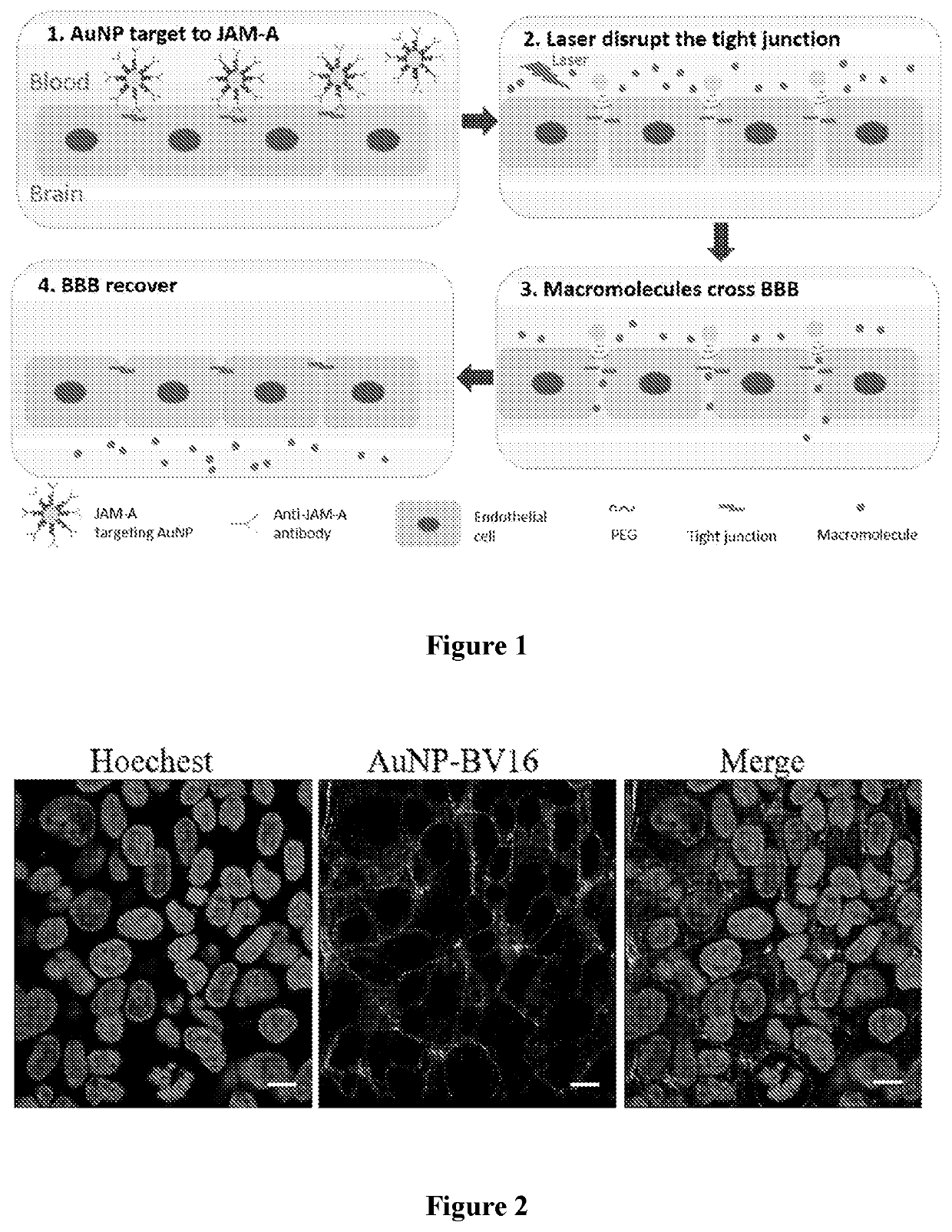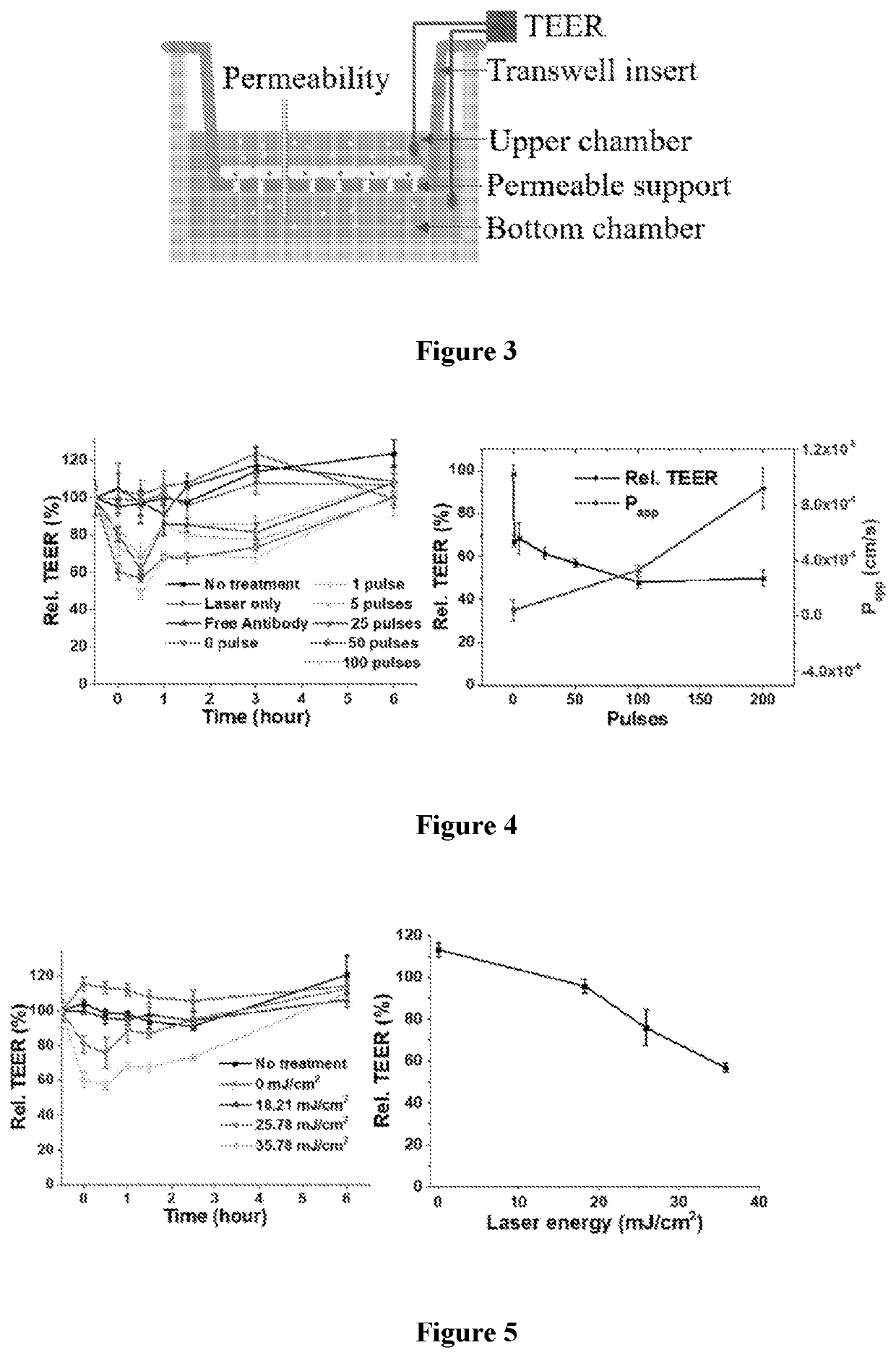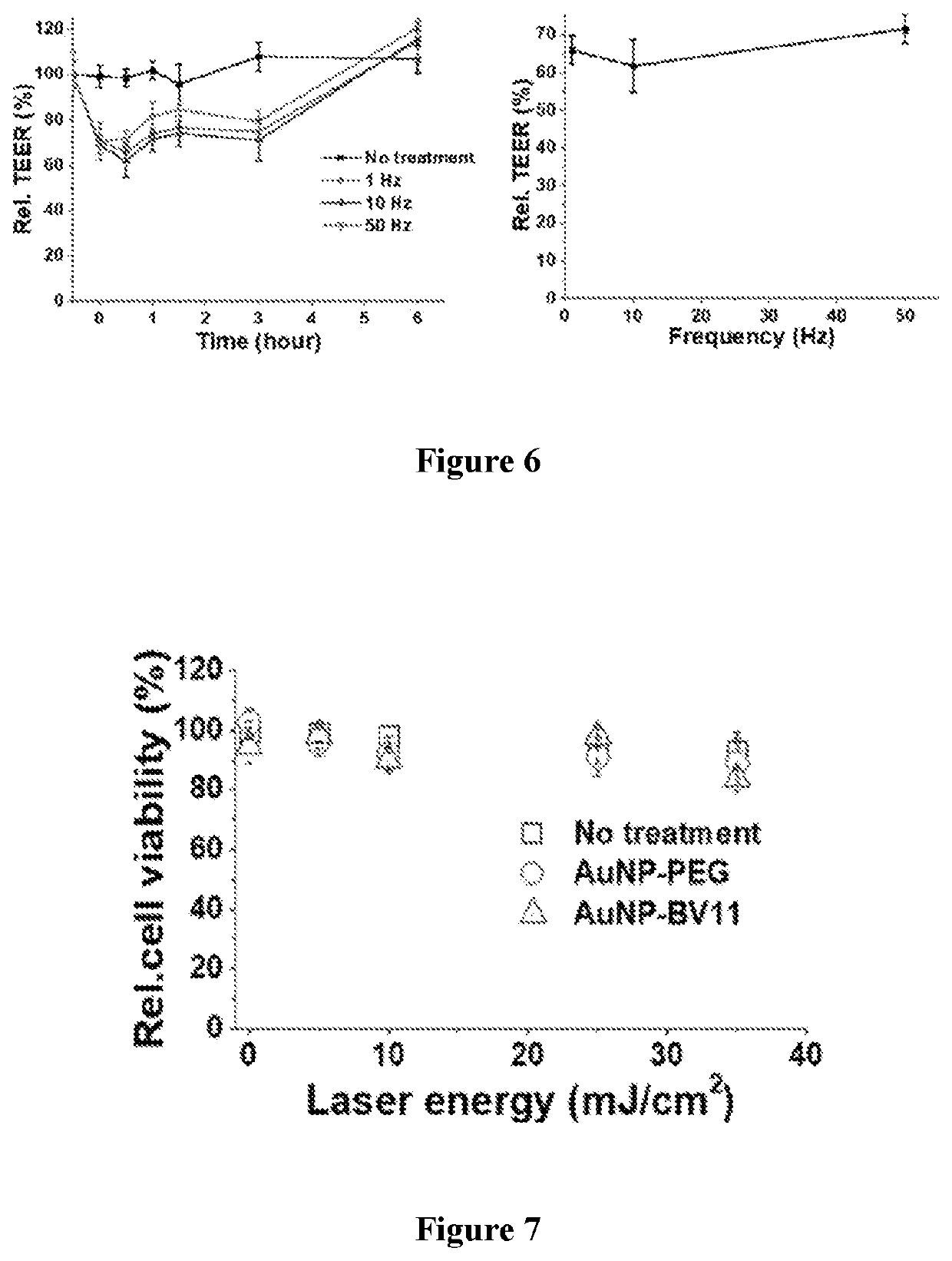Method for optical opening of the blood-brain barrier
a blood-brain barrier and optical opening technology, applied in the field of cell biology, neurobiology and membrane physiology, can solve the problems of epileptic seizures, low accumulation of therapeutic drugs in the brain, and significant neurotoxicity
- Summary
- Abstract
- Description
- Claims
- Application Information
AI Technical Summary
Benefits of technology
Problems solved by technology
Method used
Image
Examples
example 1
and Methods
[0178]Materials. Human cerebral microvessel endothelial cell / D3 cell line, EndoGRO™-MV Complete Media Kit, FGF-2, trypsin-EDTA, collagen type I, were purchased from Millipore. 532 nm picosecond (ps) was purchased from EKSPLA. Antibody BV16 and BV11 were from Prof. Dejana Lab (IFOM, Milan, Italy). Gold (III) chloride, FITC-dextran, DMSO, hydroquinone, sodium citrate tribasic, BSA, Tween 20, triton-X 100, sodium carbonate, sodium bicarbonate, and sucrose were purchase from Sigma-Aldrich. Pen-strep, donkey anti-mouse Ig G (H+L) were purchase from Life Technologies. OPSS-PEG-SVA, mPEG-Sh were purchased from Laysan Bio, Inc. Donkey serum, goat serum, Trypan blue, gold reference standard solution, Hoechst 33342, DAPI, MTT assay kit, Dulbecco's phosphate buffered saline, 20 kDa dialysis membrane, 6-, 24-, 96-well plates, and cell culture insert were purchased from Thermo Fisher Scientific. All other chemicals were analytical grade. Adult mice were ordered from Charles River Labo...
example 2
[0197]In vitro BBB model characterization. Human cerebral microvessel endothelial cell / D3 (hCMEC / D3) cells were used as in vitro BBB model. First, the inventors performed extensive characterization of hCMEC / D3 monolayer by transendothelial electrical resistance (TEER, 60 Ω·cm2), permeability (apparent permeability coefficient Papp=8.38±1.17×10−7 cm / s for 40 kDa FITC-dextran), and immunocytochemistry staining (JAM-A, FIG. 27). These values are in agreement with literature reported values18.
[0198]Synthesis of the tight junction (TJ)-targeting gold nanoparticles. The inventors synthesized AuNP with different sizes (15, 45 and 60 nm) conjugated with anti-JAM-A antibodies (AuNP-BV16 targeting hCMEC / D3 cell, and AuNP-BV11 for mice), while backfilling with polyethylene glycol (PEG) at a density of 6 mPEG / nm2 to increase the specificity of the targeting13. Upon antibody coating, the particle size increased by 18-34 nm as determined by dynamic light scattering (DLS) (FIGS. 28A and 28B) and t...
example 3
n
[0217]The BBB restricts the delivery most drug molecules into the brain by TJs that seal gap between adjacent endothelial cells with a low permeability and a high electrical resistance. Here the inventors report a novel method for temporary BBB opening. Specifically, TJ-targeting plasmonic gold nanoparticle open the BBB after excitation by ps pulse laser in vitro and in vivo. They attribute this to the nanoscale mechanical stress on the tight junction molecules. The biggest advantage of this optical BBB opening approach is the high optical resolution to investigate drug accumulation. This method can be used to investigate infiltrating gliomas especially in brain regions that does not show contrast enhancement under MRI, which beyond invasive and dangerous biopsies have been inaccessible to for drug penetration assessment. This work focuses on a critical scientific and clinical challenge of delivering drug to the brain by overcoming the blood-brain barrier. Optical BBB opening promi...
PUM
| Property | Measurement | Unit |
|---|---|---|
| Volume | aaaaa | aaaaa |
| Volume | aaaaa | aaaaa |
| Volume | aaaaa | aaaaa |
Abstract
Description
Claims
Application Information
 Login to View More
Login to View More - R&D
- Intellectual Property
- Life Sciences
- Materials
- Tech Scout
- Unparalleled Data Quality
- Higher Quality Content
- 60% Fewer Hallucinations
Browse by: Latest US Patents, China's latest patents, Technical Efficacy Thesaurus, Application Domain, Technology Topic, Popular Technical Reports.
© 2025 PatSnap. All rights reserved.Legal|Privacy policy|Modern Slavery Act Transparency Statement|Sitemap|About US| Contact US: help@patsnap.com



